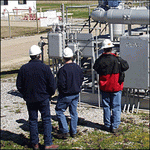 |
 |
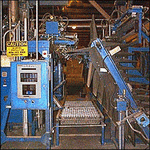 |
Lockout-Tagout (LOTO):
Arthur Zatarain has investigated accidents and incidents in which the control of hazardous energy was a significant issue. These investigations typically involved maintenance activity during which there was a personal injury or a fatality. In every instance, the harm could have been prevented by the proper isolation of hazardous energy as required by OSHA.
A common aspect of workplace accidents relates to lockout-tagout, often termed LOTO. This safety element relates to isolating all sources of energy from machinery and equipment while it is being maintained. Inadequate LOTO procedures and conformance to company policy often contributes to workplace accidents.
A LOTO procedure should be prepared for every machine and process having the potential to injure an employee during a maintenance procedure. The lockout-tagout procedure can cover multiple pieces of equipment, or it can be specific to a single unit. Adequate and documented employee training on LOTO procedures is an essential aspect of lockout-tagout management.
The legal requirement for lockout-tagout (LOTO) stems from OSHA requirements found in 29 CFR 1910.147. This regulation mandates a safe environment for employees who maintain machinery and systems that must be free of potentially harmful energy sources.
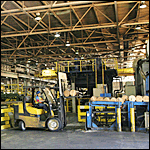 |
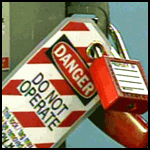 |
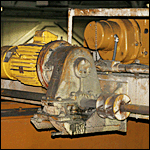 |
The engineering requirements for LOTO vary for each individual installation and work environment. Industrial accidents have been linked to LOTO procedures that were not properly designed, or were not correctly implemented. Failure to implement LOTO can result from poor planning, inadequate training, and incorrect engineered design. Isolation of hazardous energy is a key goal of LOTO that must be properly understood by everyone in the workflow chain.
Although specific LOTO steps vary among situations, the technical and procedural requirements for LOTO are generally the same for any type of equipment, process, or maintenance situation. A forensic analysis of the LOTO policies and procedures by someone familiar with lockout/tagout is often separate from an analysis of the maintenance activity that is performed by a subject matter expert (SME).
Sample forensic engagements regarding lockout-tagout include:
Paper mill conveyor
Steel Tube Extruder
Vehicle Assembly Line
Steam Release
The energy sources that must be isolated during LOTO include electrical, mechanical, pneumatic, mechanical, steam, heat, chemical, and even gravity. The critical verification of isolated energy during LOTO is often confused with simple inactivity of the affected equipment or system. A common mistake is the use of an emergency stop (E-stop) function rather than specific LOTO functions while performing maintenance on equipment. An article addressing LOTO and E-Stop can be viewed here.
The Control of Hazardous Energy Source Standard (29 CFR 1910.147), which is more commonly known as the Lockout Tagout Standard, is a Federal Occupational Safety and Health Administration (OSHA) program. It is designed to prevent the unexpected start-up, or energizing, of machinery and equipment during service and maintenance operations that could cause injury to employees. It is also designed to prevent the release of stored energy that could cause injury to employees. Employers and employees have been obligated to comply with the Lockout Tagout Standard since January 3, 1990.
Lockout/tagout procedures must verify the effectiveness of energy isolation before employees are exposed to potential hazards. A detailed training program is required for the employees who perform and enforce the employer's LOTO procedure. The employer is responsible for preparing, distributing, and enforcing policies related to multiple lockout tagouts, outside personnel, shift changes, and training of employees.
Two types of personnel are directly affected by the Lockout/ Tagout Standard: Affected Employees and Authorized Employees. OSHA defines an Affected Employee as an employee whose job requires him/ her to operate or use machinery or equipment on which servicing or maintenance is being performed under a lockout tagout procedure, or whose job requires him/her to work in an area in which servicing or maintenance is being performed under a lockout tagout procedure. OSHA defines an Authorized Employee as an employee who implements a lockout tagout procedure on machinery or equipment in order that servicing.
The basic equipment needed for a lockout tagout procedure includes locks and/or tags. Locks are to be used whenever possible. Both locks and tags must clearly indicate the identity of the employee who applied the device. This provides positive identification about who is responsible for safe servicing of the machinery and equipment. The identification will also indicate who may not have finished working in a multiple lockout tagout situation.
The locks and tags must be durable enough to withstand the environment in which they will be used. Information on the locks and tags must remain legible. Locks must be substantial enough to prevent removal without the use of excessive force. Tags must be substantial enough to prevent accidental or inadvertent removal. Both locks and tags are to be standardized by color, shape, or size. Tags must have a standard print and format. If an energy-isolating device is not capable of being locked out, a tag is to be used.
An energy-isolating device is simply a mechanical device that physically prevents the transmission or release of energy. All machinery and equipment must be designed to accept a lockout device when major replacements, repairs, renovations, or modifications of machinery or equipment are performed, or whenever new machinery or equipment is installed. An audit should be conducted on all machines and equipment to identify all potentially dangerous energy sources and all energy-isolating devices. By doing this, employers will be able to establish all appropriate lockout tagout procedures.
One aspect of lockout-tagout is investigation a root cause analysis to identify the preventable causes an accident or hazardous sitaution. The root cause is analyzed within the context of the accident as well as that of the operating environment in which it occured.
Copyright © 2025 Arthur Zatarain, all rights reserved. Some images are modified for confidentiality
or illustration clarity. This site should not be used as a technical or legal reference.

